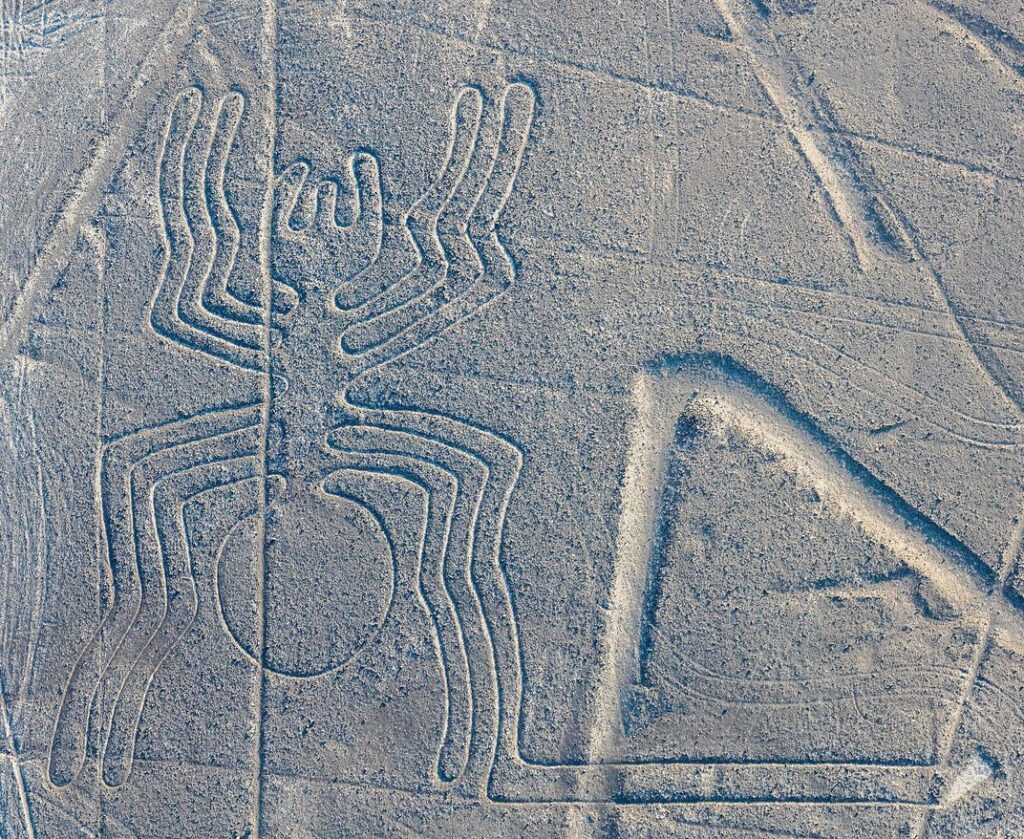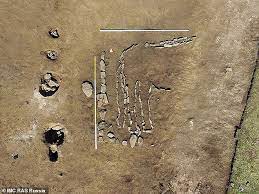The geoglyph of a 10-foot-tall Bronze Age bull in Russia is 2,000 years older than the Nazca Lines
Archaeologists have discovered a 2,000-year-old etching of a cat carved into a hillside some 250 miles southeast of Lima, Peru, reports Spanish news agency EFE. The feline, which measures about 120 feet long, has wide, orb-like eyes and appears to be sunning itself.

The newly identified likeness is a Nazca Line—one of hundreds of ancient drawings created in the Peruvian desert by removing rock and soil to produce a “negative” , writes Jason Golomb for National Geographic. Other Nazca Lines depict animals including orcas, monkeys, hummingbirds and spiders, as well as geometric shapes and humanoid figures.
Dated to between 200 and 100 B.C., the geoglyph is thought to be older than any others previously discovered in the region. Workers identified the etching while remodeling a portion of the Nazca Lines Unesco World Heritage Site, reports Tiffany .
“The discovery shows, once again, the rich and varied cultural legacy of this site,” says Peru’s Ministry of Culture in a statement.
Per the statement, the image of the lounging cat was “barely visible” prior to cleaning and conservation. As the Times notes, researchers only found it after spotting signs of “something intriguing” near the Mirador Natural lookout point.
“[It] was about to disappear because it’s situated on quite a steep slope that’s prone to the effects of natural erosion,” the ministry explains.

Famed for their impressive scale and complexity, the Nazca Lines have fascinated researchers since their modern rediscovery in the 20th century.
But experts remain divided over why the Nazca civilization, which flourished in southern Peru between 200 B.C. and 600 A.D., dedicated so much time and energy to creating the massive figures.
Peruvian archaeologist Toribio Mejia Xesspe was the first to systematically study the lines, examining them from the ground in 1926. The following decade, commercial pilots provided a fuller aerial view of the glyphs; between the 1940s and ’70s, Nazca experts Paul Kosok and Maria Reiche argued that the lines fulfilled “astronomical and calendrical purposes,” per National Geographic.
More recent investigations have shifted away from Kosok and Reiche’s theories, instead positing that the lines relate to religious rituals designed to encourage rainfall and fertility. Increasingly, wrote Stephen S. Hall for National Geographic in 2022, researchers are starting to agree that “[t]hey were not made at one time, in one place, for one purpose.”
Last year, archaeologists from Japan’s Yamagata University drew on satellite imagery, fieldwork and artificial intelligence analysis to identify 143 new Nazca Lines.
According to a statement, the findings suggested that larger glyphs served as ritual sites, while smaller ones acted as location markers for travelers.
“It’s quite striking that we’re still finding new figures, but we also know that there are more to be found,” Johny Isla, Peru’s chief archaeologist for the Nazca Lines,
The Peruvian desert’s arid climate has preserved the Nazca Lines for millennia. But erosion and human activity pose significant threats to the glyphs’ survival. A single footprint or tire mark could permanently destroy the surface of these ancient lines—and, in recent years, such damage has become increasingly common.
In , Greenpeace activists smudged the surface of a Nazca Line during a demonstration calling for action on climate change, and in , a truck driver was arrested after he intentionally drove a tractor across a condor-shaped glyph.
